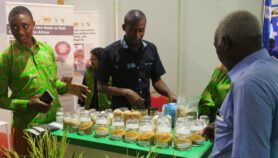By: Safya Khan-Ruf
Send to a friend
The details you provide on this page will not be used to send unsolicited email, and will not be sold to a 3rd party. See privacy policy.
Projects to encourage a switch to clean cookstoves that cut fuel use and pollution-related deaths in developing nations often fail to meet local people’s immediate needs, according to a review study.
“Improved cookstoves were designed in laboratories to optimise efficiency rather than convenience or cultural cooking practices,” says the review of decades-worth of such initiatives, published in this month’s edition of Renewable and Sustainable Energy Reviews.
To combat this, future initiatives need to involve stove users in designing and testing, it adds.
“The stove has to be competitive with the traditional stove in a multitude of factors, such as ease of use, safety, time-saving and attractiveness so that the user clearly perceives the benefits it creates,” the review says.
For example, it says that successful schemes ensured that people’s pots worked with the new cookstoves and that these stoves fitted into kitchens.
It also highlights the Tso Tso Stove Programme in Zimbabwe, which began in 1986. The project found that women valued the speed with which this type of improved stove heats up, its appearance and the perceived rise in ‘social status’ that came from owning one.
Samuel Gyamfi, an energy researcher at Murdoch University, Australia, who co-wrote the review, says improved cookstoves can raise social conditions by reducing “the time lost collecting firewood, which takes children away from school, and the distance walked, which drains their energy and reduces the amount of energy spent on income-generating activities”.
“The one-size-fits-all approach does not work with stove improvement programmes and small approaches are more effective in terms of longevity.”
Mike Clifford, University of Nottingham
But the review finds that many projects to increase the use of such stoves failed soon after their funding ended, usually due to limited community participation, poor implementation strategies, the use of inappropriate technologies and a lack of training for those making the stoves.
It is also crucial to ensure that stoves are durable, efficient and reduce pollution in real life, according to the review. Schemes in China and India achieved impressive initial results, it says, but follow-up surveys suggested that more than two-thirds of the stoves were no longer used for reasons such as breakage, poor smoke elimination or failing to save energy.
Mike Clifford, an engineering professor at the University of Nottingham, United Kingdom, says that one aspect engineers ignore is the taste food will have when cooked on an improved stove. “If the stove doesn’t cook food that the people want to eat in the way that they want to eat it, with the flavour that they want, then it’s going to fail,” he says.
He tells SciDev.Net that projects should be tailored to individual communities instead of relying on a single model. “The one-size-fits-all approach does not work with stove improvement programmes and small approaches are more effective in terms of longevity,” he says.
More than 80 per cent of people in rural areas in the developing world use wood, charcoal or other biomass as their main cooking fuel, according to 2006 data from the International Energy Agency.
Improved cookstoves are designed to generate more heat using less fuel, while reducing indoor pollution that causes premature deaths. In 2011, the World Bank estimated that 166 million families were using these stoves.
> Link to study abstract in Renewable and Sustainable Energy Reviews














